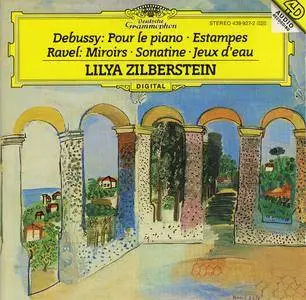Lilya Zilberstein - Claude Debussy: Pour le Piano; Estampes
Maurice Ravel: Miroirs; Sonatine; Jeux d'eau (1994)
EAC | FLAC | Tracks (Cue&Log) ~ 215 Mb | Mp3 (CBR320) ~ 189 Mb | Scans included
Genre: Classical | Label: Deutsche Grammophon | # 439 927-2 | Time: 01:13:55
Maurice Ravel: Miroirs; Sonatine; Jeux d'eau (1994)
EAC | FLAC | Tracks (Cue&Log) ~ 215 Mb | Mp3 (CBR320) ~ 189 Mb | Scans included
Genre: Classical | Label: Deutsche Grammophon | # 439 927-2 | Time: 01:13:55
Lilya Zilberstein has already taken on some of the virtuoso pillars of the repertoire for DG—Brahms's Paganini Variations, the Mussorgsky Pictures, Rachmaninov's Third Concerto and so it is fascinating to hear her in music of a more subtle evocation and delicacy. And although her Debussy and Ravel are hardly consistent or to the manner born, they are rarely less than individual or distinguished. Like other Russian pianists before her she places greater emphasis on the music's sensuous and expressive warmth than on its formal clarity. Her response to say, ''Le soiree dans Grenade'' (from Estampes) is richly coloured and inflected (a reminder, perhaps, of Falla's awe of Debussy's Hispanicism) and in ''Jardins sous la pluie'' her virtuosity evokes a coldly drenched and windswept garden its flowers momentarily bejewelled by passing sunlight. She is also highly successful in the more objective patterning of Pour le piano, making the opening Prelude's fortissimo chording and shooting-star glissandos resonate with unusual power.



